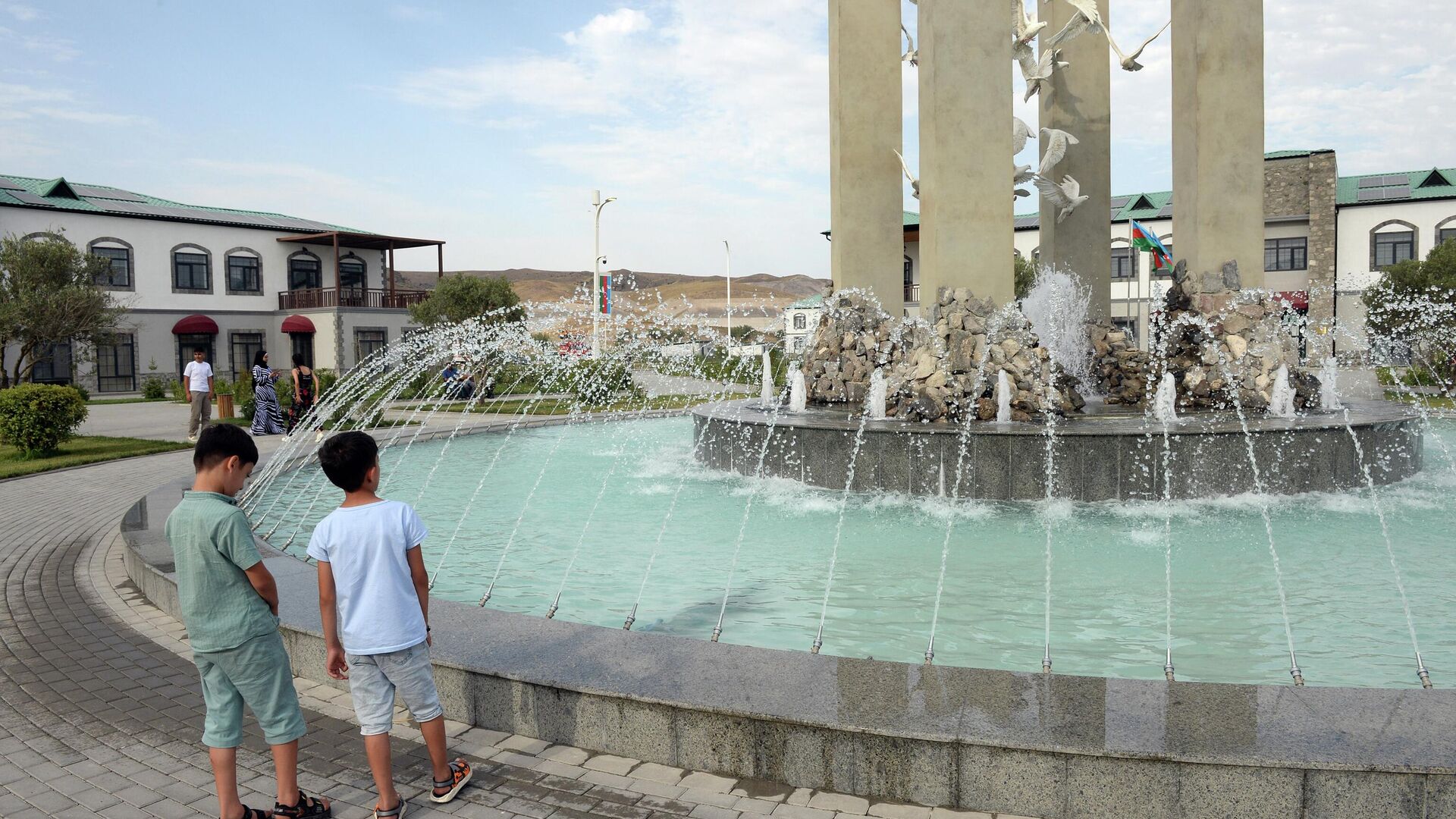Azerbaijan’s “Great Return” program has so far brought 1,360 families, or 5,354 individuals, to resettle in their native lands.
The State Committee for Affairs of Refugees and Internally Displaced Persons announced on Monday the total number of former Azerbaijani IDPs relocated to the territories liberated from Armenian occupation in 2020, AZERTAC reported.
As many as 527 families (1,969 individuals) have relocated to the city of Fuzuli, 431 families (1,627 individuals) to Lachin, 175 families (871 individuals) to Aghali village, 20 families (90 individuals) to Talish village, and 207 families (797 individuals) to Zabukh village.
The latest relocation phase took place from January 12-30, during which Fuzuli and Lachin welcomed the next groups of their former residents back from the suburban areas of Baku.
The "Great Return" refers to the process of resettling Azerbaijanis back to the territories that were liberated following the 2020 Armenia-Azerbaijan war. After decades of their displacement due to the conflict, these efforts aim to rehabilitate and repopulate the areas with their original inhabitants.
The conflict between the two neighboring nations, which sparked in the late 1980s and broke into a military phase in the early 1990s, resulted in the displacement of one million Azerbaijanis.
Following the Soviet Union’s dissolution in 1991, Armenia launched a military campaign against Azerbaijan. The bloody war lasted until a ceasefire was reached in 1994 and saw Armenia occupying 20 percent of Azerbaijan’s internationally recognized territories. Over 30,000 Azerbaijanis were killed, nearly 4,000 went missing, and one million were expelled from those lands in a brutal ethnic cleansing campaign conducted by Armenia.
The renewed clashes between the Armenian and Azerbaijani forces broke out on September 27, 2020, after Armenia’s forces deployed in the occupied Azerbaijani lands shelled military positions and civilian settlements of Azerbaijan. The attack prompted immediate counter-attack measures by the Azerbaijani army. The hostilities lasted 44 days until the signing of a trilateral statement by Azerbaijan and Armenia through Russia’s mediation on November 10, 2020. By the end of hostilities, Azerbaijani forces liberated over 300 settlements, including the cities of Jabrayil, Fuzuli, Zangilan, Gubadli, and Shusha, from Armenian occupation. Under the statement, Armenia also returned the occupied Aghdam, Kalbajar, and Lachin districts to Azerbaijan.
The ongoing resettlement is part of the broader reconstruction and rehabilitation efforts in these areas, including the rebuilding of infrastructure, homes, and public facilities to support the returning population.
On July 19, 2022, an inaugural group of 96 former IDP families returned to Aghali, the first settlement in the liberated lands designed as a “smart village” integrating advanced technologies and eco-friendly features.
The completion of the first stage of the Great Return program by late 2026 will allow 34,500 families or 140,000 people back to the liberated territories in the Karabakh and East Zangazur regions, where 34,500 apartments and private houses will be built.
The 2023 state budget allocated AZN 5.26 billion, or $3.1 billion, for the ongoing and new reconstruction projects in the Karabakh and East Zangazur regions. In 2022, AZN 4.315 billion, or $2.5 billion, was invested in the revival of the liberated lands. In 2021, the total financial allocations for this purpose stood at AZN 2.178 billion ($1.28 billion).
By 2030, AZN 30 billion or $17.6 billion will be channeled into the restoration of the liberated territories.







 Armenian sappers commenced on Monday mine-clearance operations in the territories adjacent to the Saint Mary Church in village of Voskepar (Armenia...
Armenian sappers commenced on Monday mine-clearance operations in the territories adjacent to the Saint Mary Church in village of Voskepar (Armenia...
 Iran and Pakistan have signed eight cooperation documents in various fields, and agreed to strengthen ties to fight terrorism in the region.
Iran and Pakistan have signed eight cooperation documents in various fields, and agreed to strengthen ties to fight terrorism in the region.
 President Aliyev emphasized the critical role of the North-South Transport Corridor in fostering transport cooperation between Azerbaijan and Russi...
President Aliyev emphasized the critical role of the North-South Transport Corridor in fostering transport cooperation between Azerbaijan and Russi...



